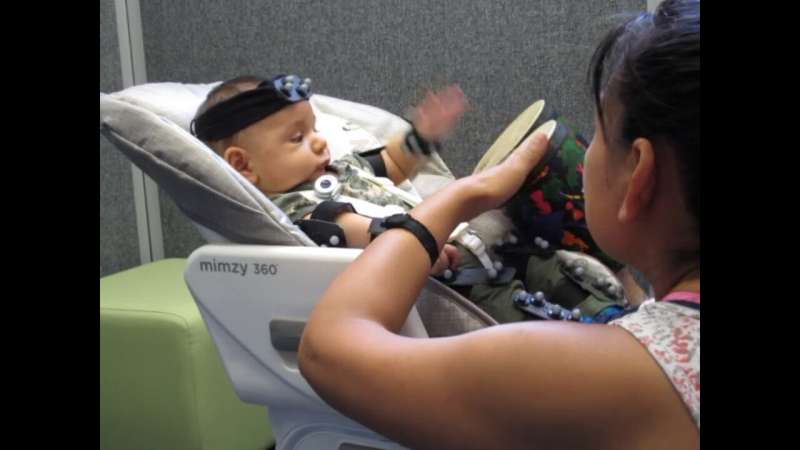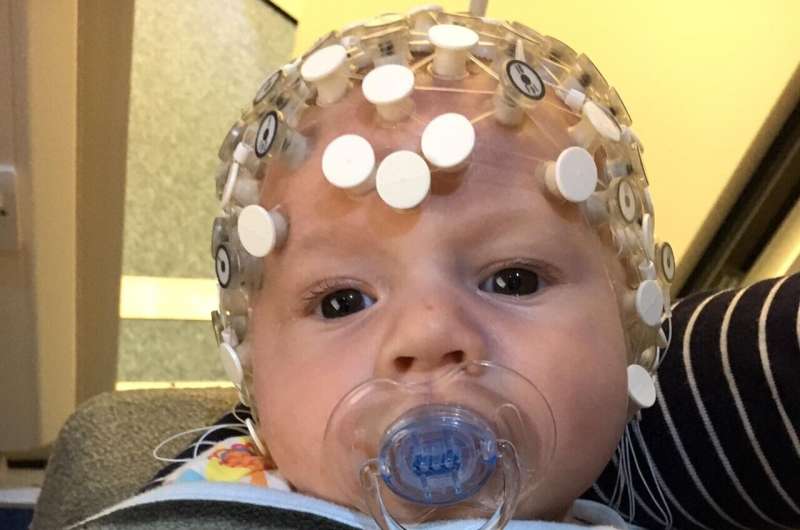This article has been reviewed according to Science X's editorial process and policies. Editors have highlighted the following attributes while ensuring the content's credibility:
fact-checked
peer-reviewed publication
trusted source
proofread
Why reading nursery rhymes and singing to babies may help them to learn language

Parents should speak to their babies using sing-song speech, like nursery rhymes, as soon as possible, say researchers. That's because babies learn languages from rhythmic information, not phonetic information, in their first months.
Phonetic information—the smallest sound elements of speech, typically represented by the alphabet—is considered by many linguists to be the foundation of language. Infants are thought to learn these small sound elements and add them together to make words. But a new study suggests that phonetic information is learned too late and slowly for this to be the case.
Instead, rhythmic speech helps babies learn language by emphasizing the boundaries of individual words and is effective even in the first months of life.
Researchers from the University of Cambridge and Trinity College Dublin investigated babies' ability to process phonetic information during their first year.
Their study, published today in the journal Nature Communications, found that phonetic information wasn't successfully encoded until seven months old and was still sparse at 11 months old when babies began to say their first words.
"Our research shows that the individual sounds of speech are not processed reliably until around seven months, even though most infants can recognize familiar words like 'bottle' by this point," said Cambridge neuroscientist Professor Usha Goswami. "From then individual speech sounds are still added in very slowly—too slowly to form the basis of language."
The researchers recorded patterns of electrical brain activity in 50 infants at four, seven and eleven months old as they watched a video of a primary school teacher singing 18 nursery rhymes to an infant. Low-frequency bands of brainwaves were fed through a special algorithm, which produced a 'read out' of the phonological information that was being encoded.

The researchers found that phonetic encoding in babies emerged gradually over the first year of life, beginning with labial sounds (e.g. d for "daddy") and nasal sounds (e.g. m for "mummy"), with the 'read out' progressively looking more like that of adults.
First author, Professor Giovanni Di Liberto, a cognitive and computer scientist at Trinity College Dublin and a researcher at the ADAPT Centre, said, "This is the first evidence we have of how brain activity relates to phonetic information changes over time in response to continuous speech."
Previously, studies have relied on comparing the responses to nonsense syllables, like "bif" and "bof" instead.
The current study forms part of the BabyRhythm project led by Goswami, which is investigating how language is learned and how this is related to dyslexia and developmental language disorder.
Goswami believes that it is rhythmic information—the stress or emphasis on different syllables of words and the rise and fall of tone—that is the key to language learning. A sister study published in Brain and Language, also part of the BabyRhythm project, has shown that rhythmic speech information was processed by babies at two months old—and individual differences predicted later language outcomes. The experiment was also conducted with adults who showed an identical 'read out' of rhythm and syllables to babies.
"We believe that speech rhythm information is the hidden glue underpinning the development of a well-functioning language system," said Goswami. "Infants can use rhythmic information like a scaffold or skeleton to add phonetic information on to. For example, they might learn that the rhythm pattern of English words is typically strong-weak, as in 'daddy' or 'mummy', with the stress on the first syllable. They can use this rhythm pattern to guess where one word ends and another begins when listening to natural speech."

"Parents should talk and sing to their babies as much as possible or use infant-directed speech like nursery rhymes because it will make a difference to language outcome," she added.
Goswami explained that rhythm is a universal aspect of every language all over the world. "In all language that babies are exposed to, there is a strong beat structure with a strong syllable twice a second. We're biologically programmed to emphasize this when speaking to babies."
Goswami says that there is a long history in trying to explain dyslexia and developmental language disorder in terms of phonetic problems but that the evidence doesn't add up. She believes that individual differences in children's language originate with rhythm.
More information: Usha Goswami et al, Emergence of the cortical encoding of phonetic features in the first year of life,, Nature Communications (2023). DOI: 10.1038/s41467-023-43490-x
Áine Ní Choisdealbha et al, Neural phase angle from two months when tracking speech and non-speech rhythm linked to language performance from 12 to 24 months, Brain and Language (2023). DOI: 10.1016/j.bandl.2023.105301



















